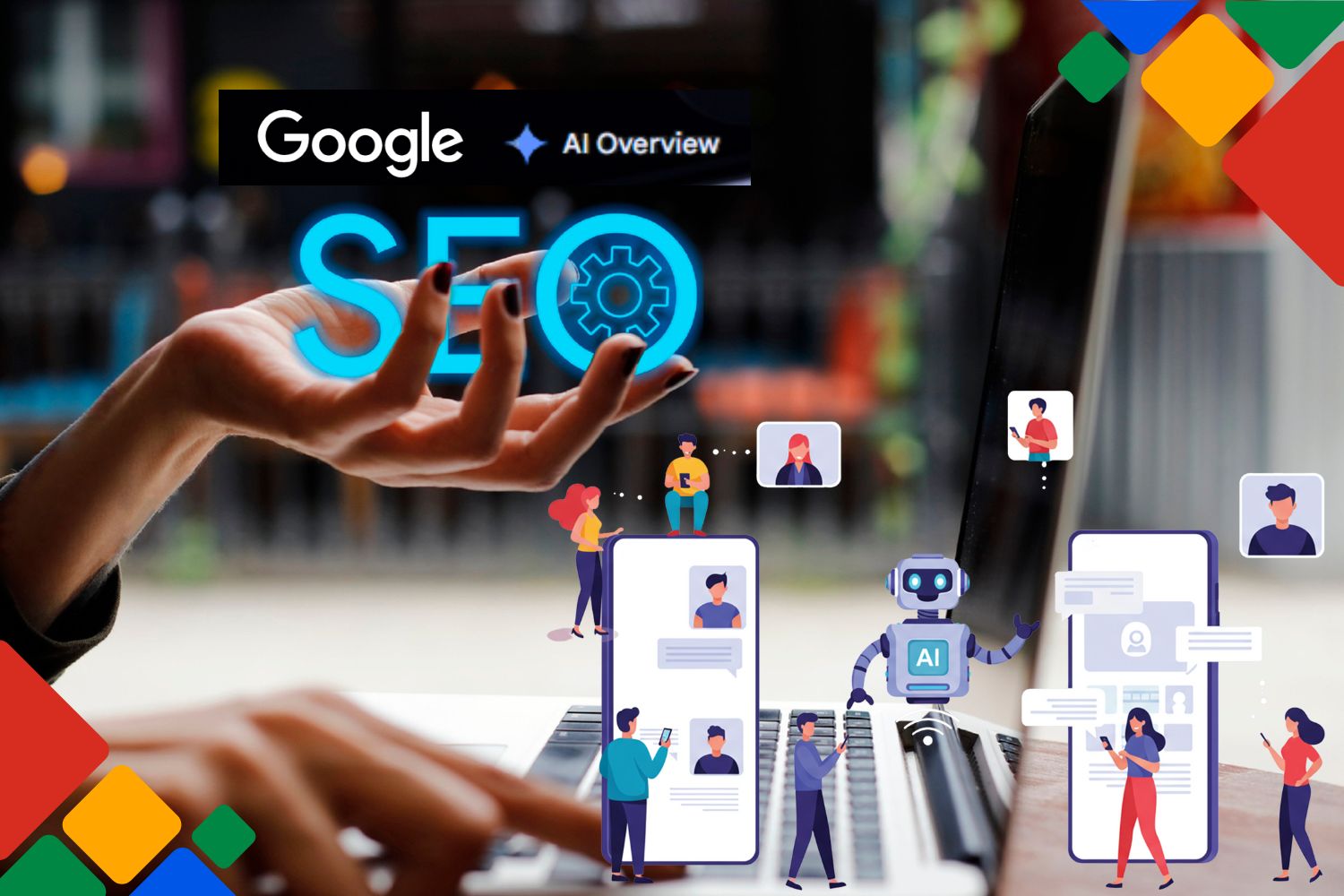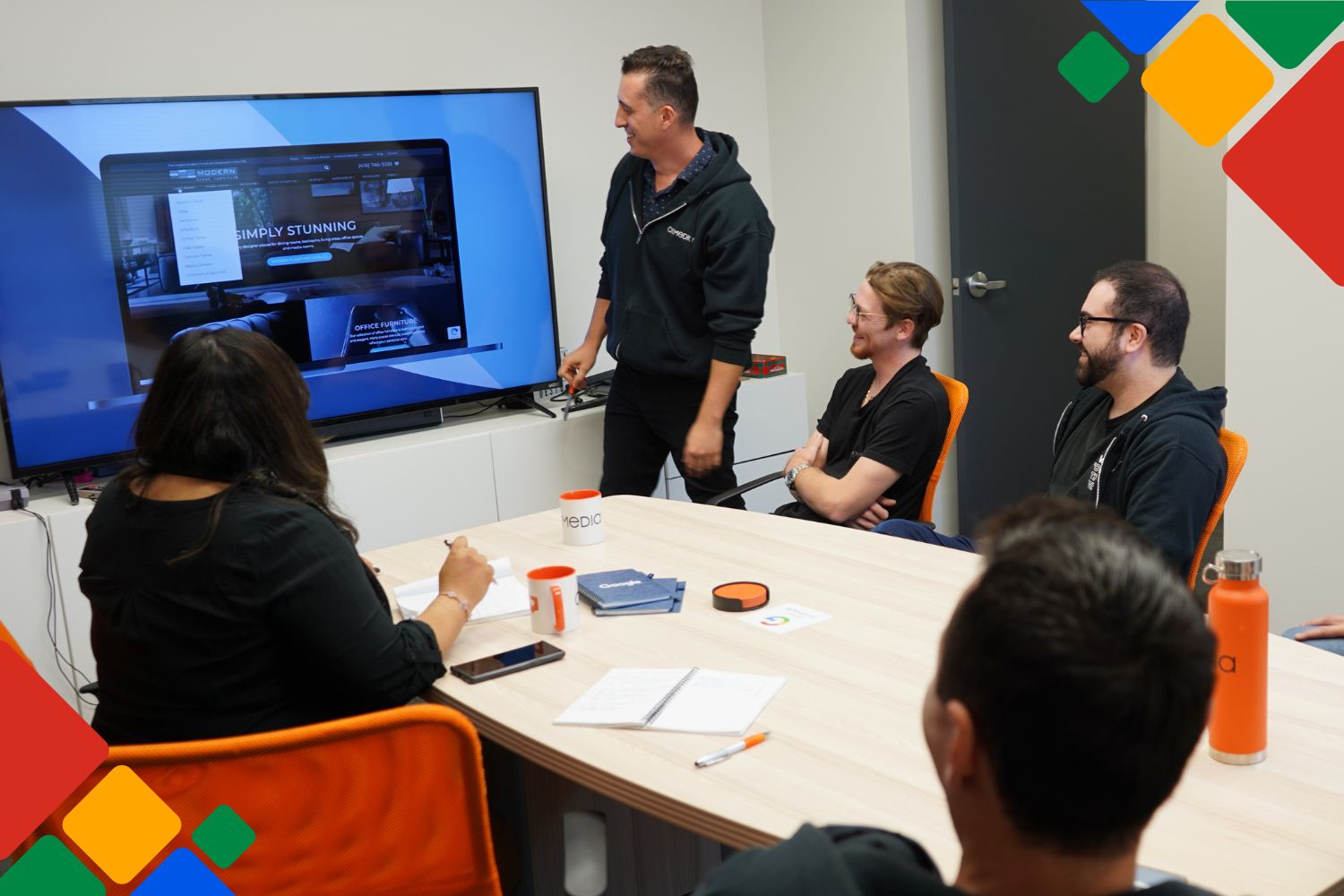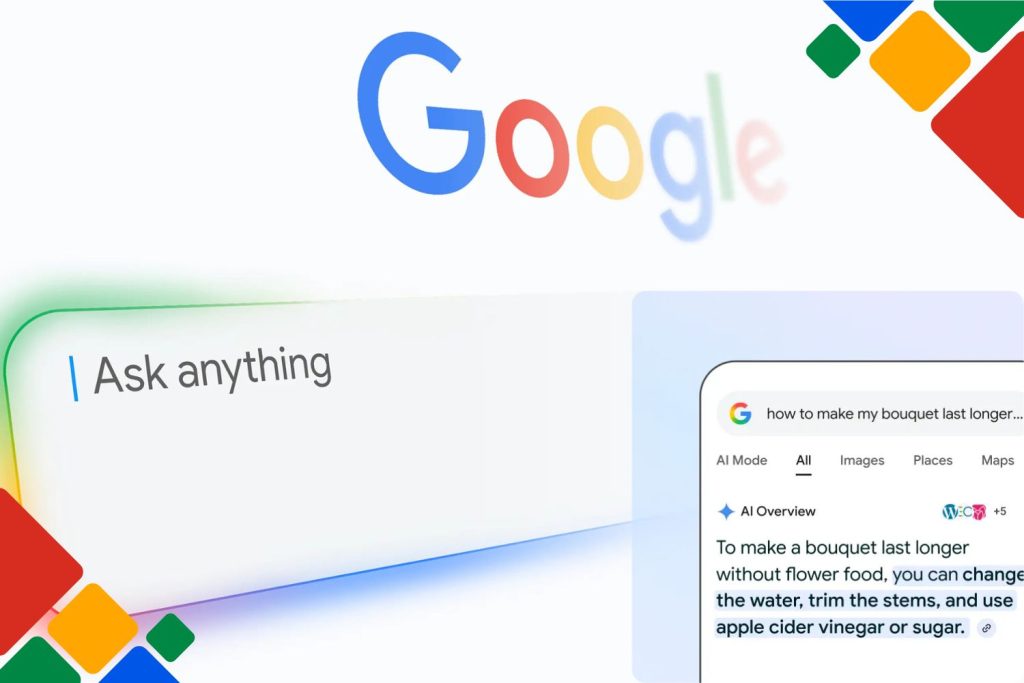Google has fundamentally changed how people interact with search. With the rollout of AI Overviews, formerly known as Search Generative Experience (SGE), we’re seeing fewer clicks, less traffic, and a new kind of challenge for business owners. Businesses that rely on organic search are asking the same question: Are Google’s AI Overviews eating our traffic? And if so, how can we respond?
The short answer: yes, they are. But that doesn’t mean you’re powerless.
AI Overviews are disrupting the traditional search journey. Instead of ten blue links, users are now getting direct, AI-generated answers at the top of their search results, sometimes with no need to click through. That shift is shaking up every industry, especially for businesses in health, finance, eCommerce, and professional services.
Here’s everything businesses need to know about how AI Overviews are impacting traffic, and how to adapt fast before rankings disappear.
What Are Google’s AI Overviews?
AI Overviews are Google’s new way of presenting information using generative AI. Instead of just linking to sources, Google now provides summarized answers to user queries directly at the top of the page. The feature is designed to offer conversational, synthesized answers to complex searches, pulling from multiple web sources in real time.
What started in Search Labs in 2023 has now rolled out to many users in North America and beyond. In 2025, AI Overviews are appearing more often, and sometimes replacing the need for users to click on any result at all.
Google describes it as a better user experience. For site owners, it’s creating a new obstacle to visibility. For a deeper look at how Google’s new AI search mode is reshaping SEO in 2025, explore our full breakdown of the rollout and its impact on visibility.
Are Businesses Losing Traffic to AI Overviews?
Yes. Many businesses are reporting organic click-through rates (CTR) dropping by 20–45%, especially for informational queries. According to a 2024 study by SparkToro, “zero-click searches” accounted for over 58% of mobile queries, and with AI Overviews in play, that number is expected to rise even further.
Here’s what’s happening:
- Google scrapes your content and summarizes it into an answer box
- The user reads the AI response and doesn’t click through
- Your site loses the opportunity for engagement, conversion, or retargeting
If your business depends on blog traffic, search visibility, or informational landing pages, this shift can directly impact your bottom line.

Who’s Being Hit the Hardest With Google AI Overviews?
Not every industry is equally affected. Based on search behavior data and SEO performance across categories, here’s where AI Overviews are doing the most damage:
| Industry | Impact Level | Why It’s Affected |
|---|---|---|
| Healthcare & Wellness | Very High | Content is often summarized and repeated |
| Legal & Financial Services | High | AI scrapes legal/finance articles for fast answers |
| eCommerce | Moderate to High | AI lists product options without linking |
| Digital Marketing & SEO | Moderate | Definitions, how-tos, strategy guides all summarized |
| Local Services (Plumbers, Dentists, etc.) | Low to Moderate | Still click-heavy, but competition rising |
Searches like “can I write my own will in Ontario” or “what is the best time to eat protein for muscle gain” often result in full AI answers with zero user interaction beyond reading.
Why Is Google Doing This?
From Google’s perspective, AI Overviews are a natural evolution. They keep users on Google longer, improve engagement, and provide a seamless experience, especially for mobile users and voice search.
For Google, it also opens the door to AI-integrated ads. Monetizing AI-generated results is already in test mode, with product cards and sponsored content beginning to appear inside Overviews. This makes Google even less dependent on external clicks and more focused on attention and interaction.
What You Can Do About It
If your site disappears from traffic due to Google AI Overviews, you’re not alone; it’s happening across industries. Despite the impact, businesses aren’t helpless. Here’s how to adapt your SEO and content strategy for 2025 to maintain visibility and drive qualified traffic in the era of AI Overviews.
Optimize for Inclusion in AI Overviews
If users aren’t clicking through, your new SEO priority is to optimize content so it gets featured inside Google AI Overviews. That means answering search questions clearly, using concise formatting, and building topical authority with reliable sources. Structure your content to include scannable headings, bullet points, easy-to-read and digestible content so it’s easy for Google’s AI to pull from. High-trust, expert-level content stands a better chance of being quoted directly in the AI snapshot. Learn how we help businesses optimize for AI search results to stay visible even as organic clicks drop.
Structure Your Content for Easy Extraction
AI Overviews pull content that’s easy to parse. Use:
- Short, clear paragraph summaries
- Bullet points and step-by-step formats
- FAQ sections at the end of pages
- You can add HowTo, FAQ, and Q&A
Make it effortless for Google’s AI to understand what your page says and trust it enough to include.
Focus on Signals
Content related to health, money, law, or safety is held to a higher standard. Google prioritizes information from websites that demonstrate:
- Experience: Add case studies, real-world applications, author bios with credentials
- Expertise: Content written or reviewed by verified professionals
- Authoritativeness: Mentions, backlinks, media citations
- Trustworthiness: HTTPS, clear privacy policy, customer reviews
Updating your content with real authorship, citations, and third-party credibility can make or break whether your site is used in an AI Overview.

Create Content AI Can’t Easily Replace
Generic how-to answers can be written by anyone, or anything. But Google and AI engines are looking for expertise with context, not just copy-paste definitions. Make your content irreplaceable by adding proof of results, local experience, or industry insights that only your business can offer. Our team knows how to position your content above AI noise. See how our SEO services near you can help your brand break through the clutter.
Add Unique Value Through Insight
- Share personal experience, data from your own campaigns, or industry-specific advice
- Use phrases like “in our experience,” “we’ve found,” or “client data shows”
- Include location-specific or case-specific scenarios
AI can’t replicate your human touch. It can’t invent stories or share direct client outcomes.
AI can’t replicate your human touch. It can’t invent stories or share direct client outcomes. For more on Google’s expectations around AI-generated content, see Google Search’s guidance about AI-generated content to ensure your content meets quality standards.
Use Various Search Intents
Some queries are most vulnerable to zero-click summaries. Instead, build content for:
- “best [product/service] for X situation”
- “how we achieved X in Y months”
- “X provider vs Y in [city]”
These types of searches are purchase-driven, and users are more likely to engage with real content and comparisons.
Increase CTR With Click Enticement
When you do rank, whether in an AI Overview, Featured Snippet, or below, give users a reason to click anyway.
Entice Curiosity with CTAs in Content
- “See how we actually solved this for a client”
- “Our results might surprise you”
- “Here’s what the other guides don’t cover”
These subtle phrases create curiosity gaps that AI summaries can’t fill.
Add Interactive or Visual Elements
- Infographics
- Short-form videos
- Interactive calculators
- Original data visualizations
None of these can be replicated in a static text summary, and they increase dwell time, a major ranking factor.
Track & Test Your AI Visibility
Most SEO tools are still catching up to SGE tracking. But there are ways to monitor your performance.
- Use platforms like SERPwatch, SEOClarity, or Rank Ranger that are beginning to show SGE inclusion
- Track changes in CTR vs position for key terms
- Watch for shifts in traffic source (organic vs direct)
Some analytics platforms are also tagging AI-generated entry points where possible, especially via Chrome extensions and Google Search Console enhancements. Google AI Overviews don’t just summarize, they select what they consider the best answers, which means your content must align with AI’s ranking signals. Tools like Semrush are starting to roll out limited insights into AI Overview visibility, helping track where your content may appear.
Prepare for Google AI Ads
Google is testing ads inside AI Overviews, which will likely become the next big PPC battleground. Brands should:
- Monitor how their industry is being shown in AI cards
- Consider blending paid and organic efforts in highly competitive SERPs
- Build content that supports retargeting (useful even if the first click is lost)
Step Up Your SEO Planning
AI Overviews are changing SEO, but not killing it. Businesses that treat SEO like a checklist will struggle, but those who embrace E-E-A-T, optimize for AI inclusion, and deliver unique, experience-rich content will stay competitive.
This isn’t the end of organic visibility. It’s the beginning of a more intelligent, more competitive, and more human-first search experience.
If your business is ready to adapt, we offer AI SEO services built specifically to help you rank in Google’s AI Overviews, ChatGPT answers, and conversational search tools. Whether you’re in law, eCommerce, home services, or healthcare, this is where the future of SEO is going.
Let’s help you show up where customers are searching. Even when there’s no search box.


